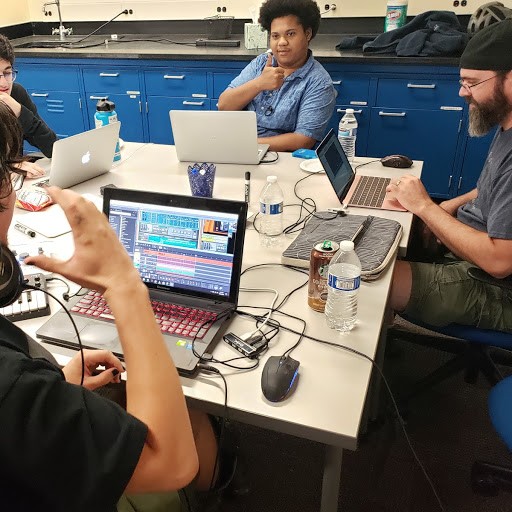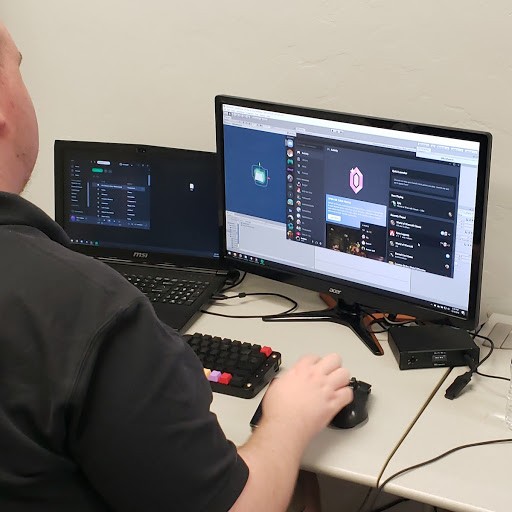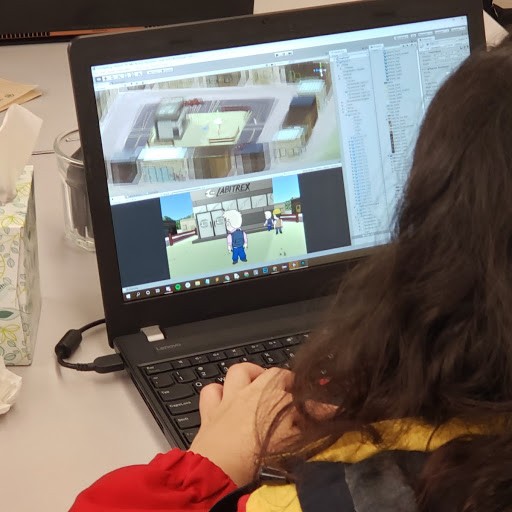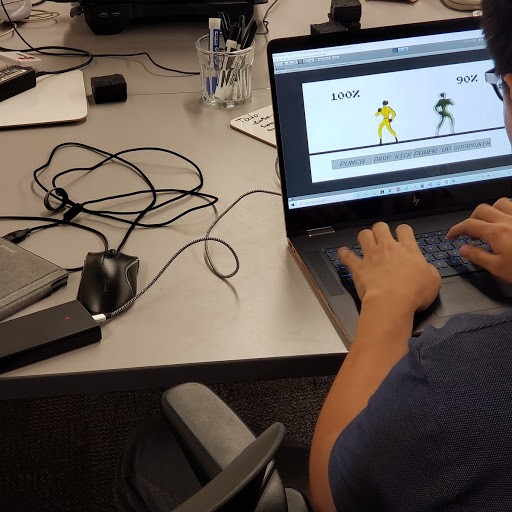‘Ready, set, Game Jam!’ at semiannual UA game-developing contest

Maverick Arnold
During the UA Game Jam a group of game developers gathered around a table to discuss their ideas on the new game that they are trying to develop.
October 9, 2019
You have 48 hours to get the theme, gather teammates, and develop a game. These are the basic guidelines for a Game Jam.
“This year we are doing a global Game Jam. Ludum Dare, which is one of the most popular game jams in the world by attendance … We’re doing that with the Tucson Game Developers Club,” Joseph Scheidemandel, University of Arizona Video Game Development Club Secretary, said.
Since 2013, the UA Game Dev Club has hosted Game Jam, which are weekend-long game development marathons. Game Jam functions as a space for those who are curious to learn about game development in a low stakes environment. This year’s Game Jam was hosted in the Gould-Simpson building from Oct. 4-6.
To the untrained eye, the guidelines may seem impossible for inexperienced game developers to accomplish. However, for Game Jam participants, starting from nothing was a common theme. In fact, “start from nothing” was actually the theme of the entire Game Jam.
RELATED: Lights, camera, action! Film Fest Tucson returns downtown

The theme “start from nothing” was the result of partnerships within local and global communities.
Although this large scale of participation may sound intimidating, it can actually be accessible for anyone to join.
“No one knows what they’re doing,” Matthew Burns, a computer science senior, said. “The people that do will tell you [how to do things].”
“Also, the crunch forces you to learn stuff,” said Ian Glockner, another member of his development group and current web developer.
“The crunch” can also be a great time for productivity, according to Scheidemandel.
“A lot of times, the Game Jam is the first time people have ever finished anything
on their own outside of school,” Scheidemandel said.
RELATED: Elvis, Tina Turner, Madonna and the Statue of Liberty walk into the University of Arizona…

According to Scheidemandel, Game Jam is “interdisciplinary.”
Game groups such as Burns’ focused on entire artistic mediums. Using his 10 years of musical experience, Burns and his teammates created their game BEAT-LESS. The platform game uses more music tracks to reflect a player’s higher health and fewer tracks to reflect poor health. BEAT-LESS also featured obstacles that team member Peter Bedrick described as “moving to the rhythm [of the music].”
Others choose to focus on concepts or stories that relate to the theme. GDC Trip Planner Amanda Ting’s team game was based on competing in a Game Jam. Ting’s team developed a game in which the player is a participant at a Game Jam, with every part of the game relating to some aspect of the tasks real life participants complete, such as typing.
While creativity may not be the first word that many associate with game development, local artist Kiana Kremer came to Game Jams for exactly that: creative reinvigoration.
Kremer described her experience at Game Jam as just “energizing.”
“I feel like creatively, I was invigorated, productive.” She said. “I was just ready to go.”
RELATED: Tucson becomes a stage for international burlesque dancers

Kremer also recommended to everyone, especially creative people, to participate in Game Jams.
“People who are creative and want to make games … like an artist who can’t program [should come],” Kremer said.
All Game Jams have a judging and submission process with multiple award categories, such as best music, art, writing and most ambitious.
Self-doubt could often times prevent potential game developers from creating games, according to Ting.
“I feel like people do a lot of self gate-keeping for game development,” Ting said. “A lot of this stuff is accessible to basically anyone.”
For those who are curious about game development, GDC hosts one Game Jam per semester.
Jessica Coan, the GDC’s president, said, “Anyone who’s got an interest in making video games — whether they’re a musician, an artist or a programmer — all of those disciplines are really necessary to making games.”
Follow The Daily Wildcat on Twitter


